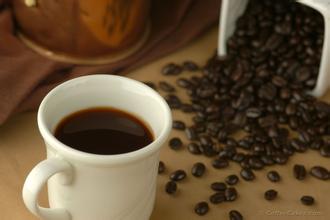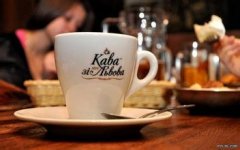Elegant fruit wine Yega Chuefei Adoto boutique coffee bean flavor, taste and aroma description, Jane

Yirga cheffe is a small town in Ethiopia, 1700-2100 meters above sea level, and is synonymous with Ethiopian fine coffee. This is a wetland since ancient times. The old saying yirga means "settle down" and cheffe means "wetland". Therefore, yirga cheffe means "let us settle down in this wetland".
Strictly speaking, Yejia Shefei is a sub-producing area in Sidamo Province of West Damo, Ethiopia. It is located in the northwest of West Damo, near mountains and lakes. It is one of the highest coffee producing areas in Ethiopia. However, the production method and flavor here are so prominent that Ethiopian coffee farmers compete to be proud of their own coffee with Yegashefi flavor, so they are independent from the West Damo production area and become the most famous production area in Africa.
Ethiopia's Yirgacheffe coffee is petite, but gentle and sweet. As the home of coffee, Ethiopia's millennia of growing and processing traditions have resulted in high-quality washed Arabica beans. Light baked with unique lemon, floral and honey sweet aromas, soft fruit acids and citrus notes, fresh and bright taste. No milk, no sugar, let the rich texture and unique soft floral brush your taste buds, leaving endless aftertaste…
The highest grades of Yirgacheffe, Sidamo are Grade II and Grade III (G2, G3),
Most of the sun-processed coffee in eastern Ethiopia is grade 4 or grade 5 (G4, G5).
In many cases, fourth-grade coffee is labeled as five-grade in order to reduce taxes. Now the classification is a little bit uneven, because there are Grand G2 and Grand G2 sun-cured Yirga Cheffe, but Harar is at the top grade 4 Ethiopia is the home of Arabica coffee, and it is in the forests of the Kaffa region that you can see Arabica coffee wild. In Ethiopian, coffee is called "Bun" or "Buna," and coffeebean may be translated from "Kaffa Bun." Arabica coffee has long been found in Harar, probably from the Kafa forest.
Ethiopian coffee is processed by sun and water washing. The flavor of coffee processed by different processing methods varies greatly. Generally speaking, the mellow and earthy taste of washed Sidamo, Yirgacheffe and Limmu coffee is slightly lower, and the coffee processed by sun has a wilder taste. However, the taste of each batch of Ethiopian coffee may be different, which requires more cup tests to find the real good coffee.
Yegashefi is a small town, 700-21000 meters above sea level, synonymous with Ethiopian fine coffee. It is a wetland since ancient times, and the old saying "Yirga" means "settle down" and "Cheffe" means "wetland". The way coffee is produced and the flavor is so prominent that Ethiopian coffee farmers compete to be proud of their coffee with Yegashfi flavor, which has become Africa's most famous coffee producing area.
At first, the coffee trees in Yegashefi were planted by European monks, but later by farmers or cooperatives. Yegashefi is actually formed by surrounding coffee communities or cooperatives, which generally include: Hafusa, Hama, and Biloa.
These mountain villages are foggy, spring all year round, cool but not hot in summer, rain but not damp in winter, and they breed unique regional flavors of citrus and flowers. Coffee trees are mostly grown in farmers 'backyards or mixed with other crops in the field. Yegashfi is a region in Ethiopia's Sidamo Province. It is famous for its unique coffee flavor. The name Yegashfi is even bigger than the name of Sidamo Province. Recently, the domestic Ye Jia Xue Fei can be said to be overwhelming, more and more coffee lovers are also familiar with all kinds of Ye Jia Xue Fei.
There are many high-quality coffee processing plants in the Yegashefi region. A lot of caffeine comes from these processing plants and becomes a hundred times more valuable. The solarization fee from Kebel Aricha Mill is one of them. This coffee is also known as ARICHA beans. It is processed by Kebel Aricha processing plant and classified as Gr.1 or G1 by ECX.(Ethiopian coffee highest grade), known as the "king of fruit" taste is also relatively strong, there is a little chocolate and caramel taste, sour is not very obvious, than the hand red taste is also thick and low, there is a little jasmine tea taste, there is obviously back to sweet, stay in the mouth for a long time. The fermented flavor wasn't as strong as the previous one. As the temperature decreases, the sourness increases, it becomes brighter, and the taste becomes a little cleaner. In short, the experience of using pressure, coffee appears heavier and darker, more flavor. The overall feeling is still citrus aroma is not obvious, even difficult to find, there are sun beans characteristics, taste thick alcohol, there is a fermented taste. The use of French press, the best interpretation of the original taste of coffee, but some people may not be used to the taste of coffee grounds left behind by French press. Here I am using a French press made by Bodum for Starbucks. The filter is very strong, but there are still some coffee grounds.
Ethiopia's coffee producing areas are Sidamo, Harrar and Yirgacheffe. Sidamo and Harrar are provinces and divisions. Sidamo is located in the south of Ethiopia adjacent to Kenya. Harrar borders Somalia in the east of Ethiopia. Although Yirgacheffe is a small area in Sidamo region, due to soil composition and water content, its coffee production is considered to be the best in Ethiopia.
In the West, Ethiopian coffee is marketed as Yirgacheffee, Sidamo and Harrar.
In the fine coffee sector, there are five other small local coffees, namely Limmu, Djimmah, Lekempti, Bebeka and Wolega. The most common coffee is either Sidamo or Harrar coffee. Ethiopian coffee grades:
Ethiopia washed coffee yejia sherfi G1 G2
Initially, Yegashefi's coffee trees were cultivated by European monks (a bit like Belgian monks growing wheat to brew beer), but later by farmers or cooperatives. Yerga Shefi is actually constructed by surrounding coffee communities or cooperatives, including Idido, Harfusa, Hama, and Biloa near Misty Valley, all washed, but a small number of unique beans are deliberately sunburned to enhance the charming fruity flavor and body. These mountain villages are foggy, spring all year round, cool but not hot in summer, rain but not damp in winter, and they have a unique regional flavor of citrus and flowers.
Coffee trees are mostly planted in farmers 'backyards or mixed with other crops in the field. The yield per household is not much. It is a typical pastoral coffee. Yega Shefi award-winning beans almost come from the coffee villages and communities mentioned above. The so-called "yejia sherry flavor" refers to rich jasmine flowers, lemon or lime acid aroma, as well as peach, almond sweet or tea aroma. The phrase "coffee in the mouth, flowers in full bloom" is the best way to describe it, just as flowers stimulate the comfort of taste buds and nasal olfactory cells. In addition to the floral fragrance, the body is delicate and mellow, like silk massage in the mouth, wonderful touch. Many coffee chemists have begun to study the microclimate and soil conditions surrounding Yekashefi in order to derive the growing equation for fine coffee.
Yega sherry is divided into two categories according to different processing methods of coffee beans: Class A is washing treatment method, and the grade standard is formulated by SCAA of American Fine Coffee Association. It is divided into Gr-1 and Gr-2. The smaller the Arabic number, the higher the grade. G1 Yega sherry has a distinct style, and the citrus flavor and floral flavor blend in the coffee liquid is delicious that everyone cannot resist. Class B is sun-treated green coffee beans, which are divided into Gr-1, Gr-3, Gr-4 and Gr-5. The same highest grade of G1 sun-dried yejia sherfie is rich in fruit fragrance. Opening the freshly roasted G1 sun-dried yejia sherfie coffee bag can subvert everyone's original understanding of coffee. Only those who have tasted the highest grade of sun-dried yejia sherfie will believe that coffee is a kind of fruit_
Yejia Shefi is a small town in Ethiopia, 1700-2100 meters above sea level, located in the northwest of West Damo Province, surrounded by mountains and lakes. It is one of the highest coffee producing areas in Ethiopia and synonymous with Ethiopian fine coffee.
Strictly speaking, Yejia Shefei is a sub-production area of Sidamo in Ethiopia, which is independent due to its special flavor. In addition to the town of Yejia Shefei, it also includes three sub-producing areas, namely Wenago, Kochere and Gelena/Abaya.
1. Planting system and environment
The mountain villages in the Yega Shefi region are cool and foggy, spring all year round, cool but not hot in summer, rainy but not damp in winter, and the best environment for planting Arabica. There are no large coffee plantations here. Coffee farmers grow coffee mixed with other crops, usually under banana trees, forming a unique landscape.
2. Processing method
Ethiopia's traditional way of sun treatment is rough and heavy, which is criticized by people. In 1959, Yejia Shefei production area introduced South American washing treatment method, most production areas are generally used washing treatment, that is, coffee fruit peeling, fermentation, washing process after removing pectin layer, and then drying.
Since 2006, some coffee processing plants in some producing areas have adopted exquisite overhead solarization, which involves intensive manual labor to isolate the coffee fruit from contact with the ground and prevent the dirt from being produced in the process of solarization, creating an unusually clean fruit flavor. After more than two weeks of sun exposure, the dark brown coffee cherries are professionally stored, waiting for the full flavor to ripen. Before sale, the dried cherry pulp and sheepskin are removed, and then the immature beans and overfermented beans are eliminated. Strict control greatly improves the quality of the sun-dried beans.
3. Flavor characteristics
Washed yega-sherry has a distinct lemon flavor, refreshing jasmine flowers, and soft fruit acids and citrus flavors, fresh and bright taste.
Sun-baked yejia sherry has charming fruit acid, clean fermented fruit sweet, elegant fruit aroma, sweet aftertaste.
4. Level
Ethiopian coffee is graded not according to the number of seeds, but according to the proportion of defective beans in the raw beans. In October 2009, Ethiopia launched the ECX Fine Coffee Trading Grading System. Q-Grader rated green beans as follows:
There are two grades of Grade 1 and Grade 2.
Sunlight plus snow is divided into Grade 1, Grade 3, Grade 4 and Grade 5.
Grade 1 is the highest grade, that is, the lowest defect rate and the best quality Yega Shefi.
Sun-baked coffee has a strict collection of red fruit (coffee tree fruit) standards, before exposure to coffee fruit manually remove immature green fruit or defective fruit, sun process and then remove damaged or moldy fruit, two weeks after the pulp sugar and essence of all into the coffee beans, water content reduced to 12%, and then hardened pulp, pectin layer, pods together with the scraper clean, coffee beans removed but also through density and bean color testing. After the defective beans are eliminated, the workers finally pick out the defective beans with the naked eye, and the layers of screening are checked and screened, resulting in a clean and refined Yerga Sherphine sun-dried beans with a rich and charming fruity 2015 sun-dried Yerga Sherphine, which has already appeared G1 grade, exceeding G1 washing in quality and appearance.
This bean is roasted until it explodes. It is brewed by hand and siphon. When grinding beans, it smells tangy sun fruity fruit, sweet and obvious. It also has the signature citrus and jasmine flowers of washed Yerba Sherphine. It tastes like Harar, Yemen Mocha and Yerba Sherphine. The combination flavor of washed beans is the oldest sun treatment method. However, in 1972, Ethiopia introduced Central and South American washing technology to improve quality. Make the jasmine fragrance and citrus fragrance of yejia sherphine more clear and refined
It has become the best quality bean in the world. The exquisite washing technology has contributed greatly. After the 1970s, this area was mainly washed with water and became the most popular washing bean producing area in Egypt.
However, in the past two years, yejia snow coffee has become a popular fried chicken in the boutique market by frequently introducing amazing sun-dried beans!
Sun-baked yeka coffee, beans are small and neat round, Ethiopian sun-baked beans are generally G3-G5, but this bean is G2, equal to the level of washed beans, although there are still a few defective beans, but compared with Harald and Sidama sun-baked beans, is valuable
Important Notice :
前街咖啡 FrontStreet Coffee has moved to new addredd:
FrontStreet Coffee Address: 315,Donghua East Road,GuangZhou
Tel:020 38364473
- Prev

A brief introduction to the treatment method of grinding degree and baking degree of Mai boutique coffee beans with the most unique flavor
Alishan Mafeel is planted in the Alishan Mountains, and the Alishan Mountains are uniquely located in the global coffee belt. Because of the high altitude and the temperature difference of more than 10 degrees between day and night, the coffee beans produced are of the best quality, with full grains, thick pulp, sweet and mellow taste, sweet, non-astringent, not bitter, not sour, and perfectly showing the taste of coffee.
- Next

A brief introduction to the History and Culture of the Origin and Development of Fine Coffee beans
It has become one of the best quality beans in the world, thanks to its exquisite washing technology. Since the 1970s, this area has become the most popular water-washed bean producing area in Egypt. However, in the past two years, Yejia snow coffee is unusual, frequently launched amazing sun beans, and become a boutique market Deep-Fried Chicken! In the sun, the beans are small, neat, short and round, Ethiopia Day
Related
- Detailed explanation of Jadeite planting Land in Panamanian Jadeite Manor introduction to the grading system of Jadeite competitive bidding, Red bid, Green bid and Rose Summer
- Story of Coffee planting in Brenka region of Costa Rica Stonehenge Manor anaerobic heavy honey treatment of flavor mouth
- What's on the barrel of Blue Mountain Coffee beans?
- Can American coffee also pull flowers? How to use hot American style to pull out a good-looking pattern?
- Can you make a cold extract with coffee beans? What is the right proportion for cold-extracted coffee formula?
- Indonesian PWN Gold Mandrine Coffee Origin Features Flavor How to Chong? Mandolin coffee is American.
- A brief introduction to the flavor characteristics of Brazilian yellow bourbon coffee beans
- What is the effect of different water quality on the flavor of cold-extracted coffee? What kind of water is best for brewing coffee?
- Why do you think of Rose Summer whenever you mention Panamanian coffee?
- Introduction to the characteristics of authentic blue mountain coffee bean producing areas? What is the CIB Coffee Authority in Jamaica?

